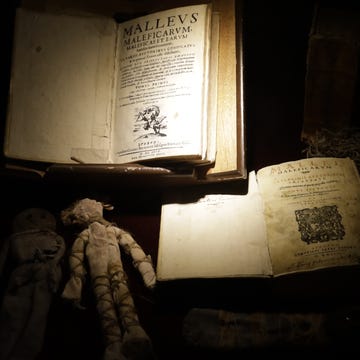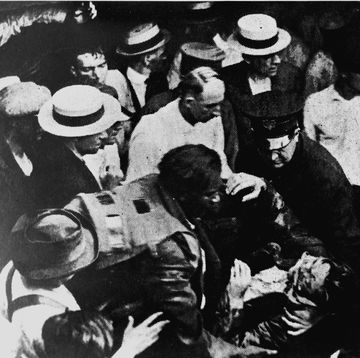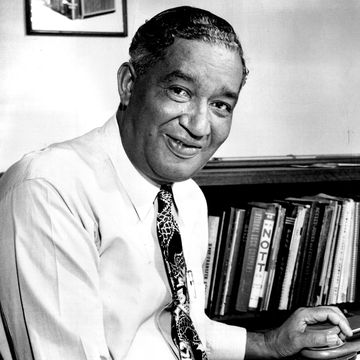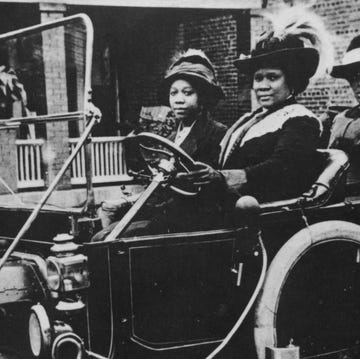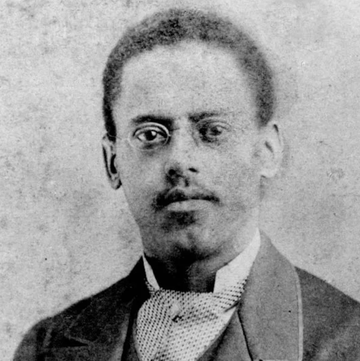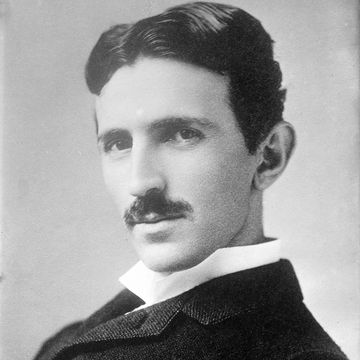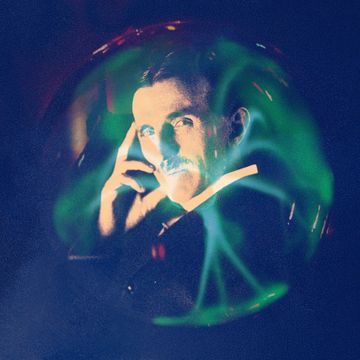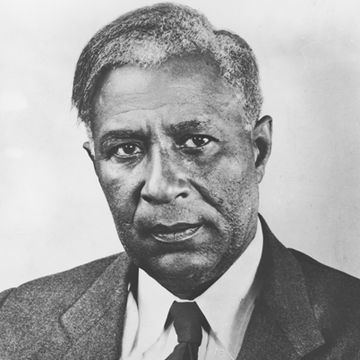In late 1913, New York World journalist and editor Arthur Wynne was planning the Christmas edition of “Fun,” the newspaper’s jokes and puzzles section, when he decided to challenge his readers with something new: a game that would make them think. He published the first-ever Word-Cross Puzzle, the brainteaser we now know as the crossword puzzle.
Unlike the puzzles we often see today, Wynne’s version was diamond-shaped with a hollow center. “By modern standards, some clues were stupidly simple, like a four-letter word for part of your head: FACE,” wrote New York Times columnist Richard E. Mooney in 1988. “Others were stupidly hard, like fiber of the gomuti palm: DOH.”
Crossword puzzles are now a commonplace activity over coffee in the morning, on the couch at night, or any time and place in between. But when the World published the first crossword puzzle 111 years ago, the newspaper wasn’t expecting it to become a mainstay. The editors viewed the game as a passing fancy and never copyrighted it.
While Wynne didn’t make much money from his invention, it still became his legacy. He eventually moved on from crossword puzzles, but the world didn’t. The game became a phenomenon, and Wynne’s creation remains a part of life for many Americans more than a century after its debut.
Arthur Wynne’s Early Career
A journalist from Liverpool, England, Arthur Wynne was born in 1871. He moved to the United States to pursue a journalism career, following in the footsteps of his father, himself a newspaper editor, according to The Guardian.
Wynne worked first at the Pittsburgh Press. He eventually took a job at the now-defunct New York World, a purveyor of sensationalistic yellow journalism. In 1911, the World launched its weekly color Fun supplement, and Wynne was put in charge of it two years later.
However, for the 1913 Christmas edition, “he had space to fill but nothing to fill it with,” writes Adrienne Raphel in her book Thinking Inside the Box: Adventures with Crosswords and the Puzzling People Who Can’t Live Without Them. He needed to find a solution.
Inventing the Modern Crossword Puzzle
As the story goes, Wynne’s editor suggested that Wynne add more puzzles to the Fun section. By some accounts, Wynne was inspired by a game from his childhood called Magic Square, where words are placed in a grid so that they read the same both vertically and horizontally.
According to Raphel’s book, Wynne himself acknowledged that he based his invention on similar word puzzles that had been published in children’s magazines in England and other publications like People’s Home Journal. Like Wynne’s invention, these games involved crisscrossing words, often in a grid format. But many of them required readers to draw their own grids or write their answers elsewhere.
Wynne is often credited with creating the modern version of the crossword puzzle and popularizing the brainteaser in the United States and beyond. He harnessed 20th century advances in printing technology that enabled him to print large grids in the World with empty squares players could fill in with letters.
“Wynne’s crossword was the first that incorporated crossed words directly on the page with blocked-out squares, pushing beyond the natural limitations of the word square and creating a much more flexible, and expandable, game,” Raphel writes.
A few weeks after the first crossword puzzle was published on December 21, 1913, a typographical error in the World referred to the weekly game as a Cross-Word Puzzle, eventually formatted as crossword puzzle. The name stuck.
Crossword Craze
Following the outset of World War I in 1914, people began playing crossword puzzles as a distraction as the conflict escalated. When Wynne tried to patent the game, World editors refused to pay the associated costs.
Other newspapers, particularly in the United States and England, began printing puzzles as the craze surrounding them grew. One exception was The New York Times, which felt these games didn’t have a place in newspapers and were a passing fad.
According to Smithsonian Magazine, Richard Simon and M. Lincoln Schuster printed The Crossword Puzzle Book in 1924, the same year they opened their publishing house. It became a bestseller. As part of its efforts to market the duo’s first published book, Simon & Schuster also established the Amateur Cross Word Puzzle League of America, which began standardizing the appearance of crosswords that year.
Arthur Wynne’s Legacy
By 1921, Wynne had hired a secretary, Margaret Farrar. Two years later, she had taken over all crossword puzzle duties at the World, advancing its development by establishing new industry standards, such as permitting only dictionary words, according to Raphel’s book.
For the remainder of his career, Wynne worked mostly for newspapers owned by publisher William Randolph Hearst, chief rival of Joseph Pulitzer at the World. (Editor’s note: Biography is operated by Hearst Magazines.) At one point, Wynne patented a game called a step-word puzzle, an iteration of the crossword puzzle involving a word ladder. “Though he got his step-word patent,” Raphel writes in her book, “he’d lost the war: the stepchild might be his, but the parent technology was free for the world to use as it pleased.”
By Wynne’s death in 1945, the craze had certainly caught on. In February 1942, even the Times joined the fun and began publishing crosswords of its own, and Farrar went on to become the paper’s crossword puzzle editor. These games, the Times realized, could help distract Americans from the horrors of World War II.
Today, newspapers publish crossword puzzles daily, and they are among the most popular games on the planet.
Jordan Friedman is a freelance writer, journalist, and content marketer based in New York City with a passion for investigative research and storytelling. His work has appeared on HISTORY, Biography.com, Smithsonian Magazine, and USA TODAY, among other publications. He is also a former education editor and reporter for U.S. News & World Report.







